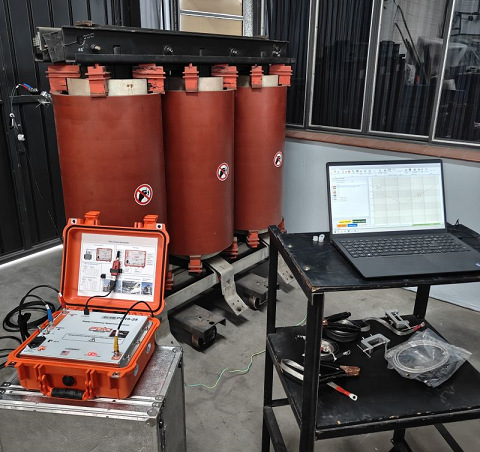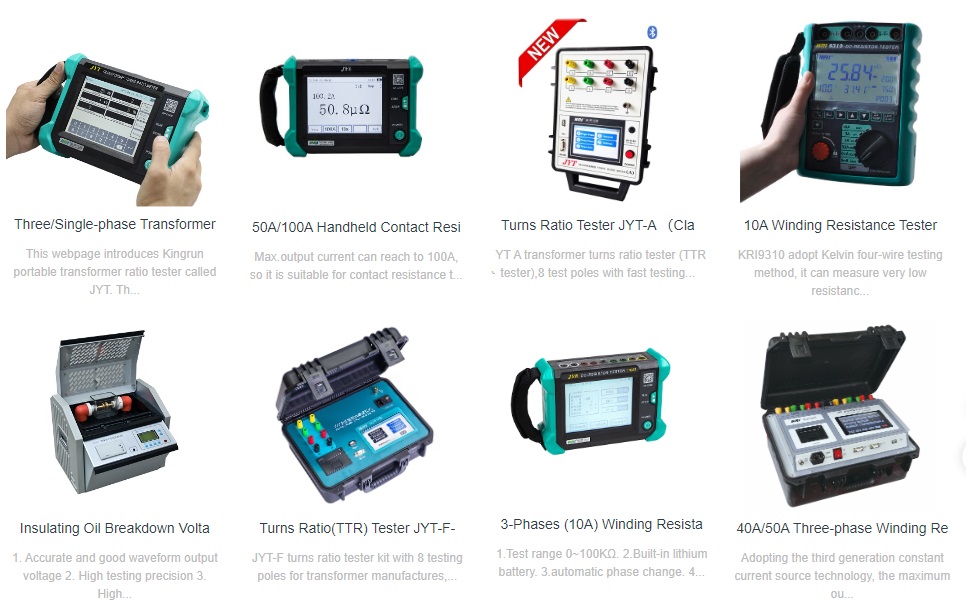Basic Principles and Core Role of SFRA (Sweep Frequency Response Analysis)
SFRA is a highly sensitive technique for assessing the mechanical integrity of transformers. Its core principle involves injecting a wide frequency range signal (from tens of Hz to several MHz) into the transformer and measuring the output signal to generate a frequency response curve. These curves are often referred to as the “mechanical fingerprints” of the transformer, precisely reflecting the mechanical condition of components such as windings and cores. Mechanical issues like winding displacement, clamping structure loosening, or core movement, which traditional electrical tests (e.g., turns ratio or DC resistance) cannot detect, will manifest as distinctive changes in the curve features.

SFRA Test Procedures and Standardized Application
SFRA testing follows strict procedures and is supported by international standards:
Baseline Curve Establishment: This is typically performed during transformer manufacturing to create an initial frequency response curve that serves as the reference for the mechanical condition of the equipment.
Subsequent Comparison and Monitoring: In service and maintenance phases, repeated testing and comparison to the baseline curve enable quantitative analysis of mechanical changes and early detection of defects.
International Standards Compliance: SFRA adheres to standards like IEEE C57.149, IEC 60076-18, and CIGRE guidelines, ensuring scientific methods and comparable results.
Technical Advantages and Practical Value of SFRA
SFRA has become a core tool in modern transformer maintenance thanks to its multiple advantages:
Non-destructive Testing: It requires no disassembly of equipment, thus avoiding the risks and costs associated with traditional maintenance while minimizing downtime.
Early Defect Identification: Mechanical defects such as minor displacement or loosening can be detected in their early stages, preventing catastrophic failures like winding short-circuits or core overheating, and enhancing operational reliability.
Performance Degradation Tracking: Long-term data accumulation allows the creation of performance degradation trends, supporting data-driven maintenance strategies.
Cost-effectiveness: It minimizes insurance costs and production losses caused by sudden failures and extends transformer service life through preventive maintenance.
Implementation Requirements and Equipment for SFRA
SFRA testing requires several critical elements:
Specialized Instruments: Instruments like Omicron FRANEO and Megger FRAX are essential for generating wide-band signals and collecting high-precision responses.
Supporting Components: This includes compatible test cables, data analysis software (for plotting, comparison, and trend analysis), and a robust grounding system to ensure signal stability and resistance to interference.
Qualified Operation: Testing should be performed by certified technical personnel to ensure process compliance and accurate data interpretation.
Industry Positioning and Application Trends of SFRA
As demands for equipment safety in power systems rise, SFRA has become an “essential technology” in full lifecycle transformer management. Its application extends from factory acceptance testing to periodic inspections during grid operation. For asset owners and maintenance managers, regular SFRA testing is a key measure to ensure safe and stable operation of the power system. By continuously monitoring changes in the transformer’s “mechanical fingerprint,” it facilitates a shift from “reactive repairs” to “proactive prevention,” ultimately enhancing both the reliability and economic efficiency of power infrastructure.
Kingrun Transformer Instrument Co.,Ltd.


More Transformer Testers from Kingrun
